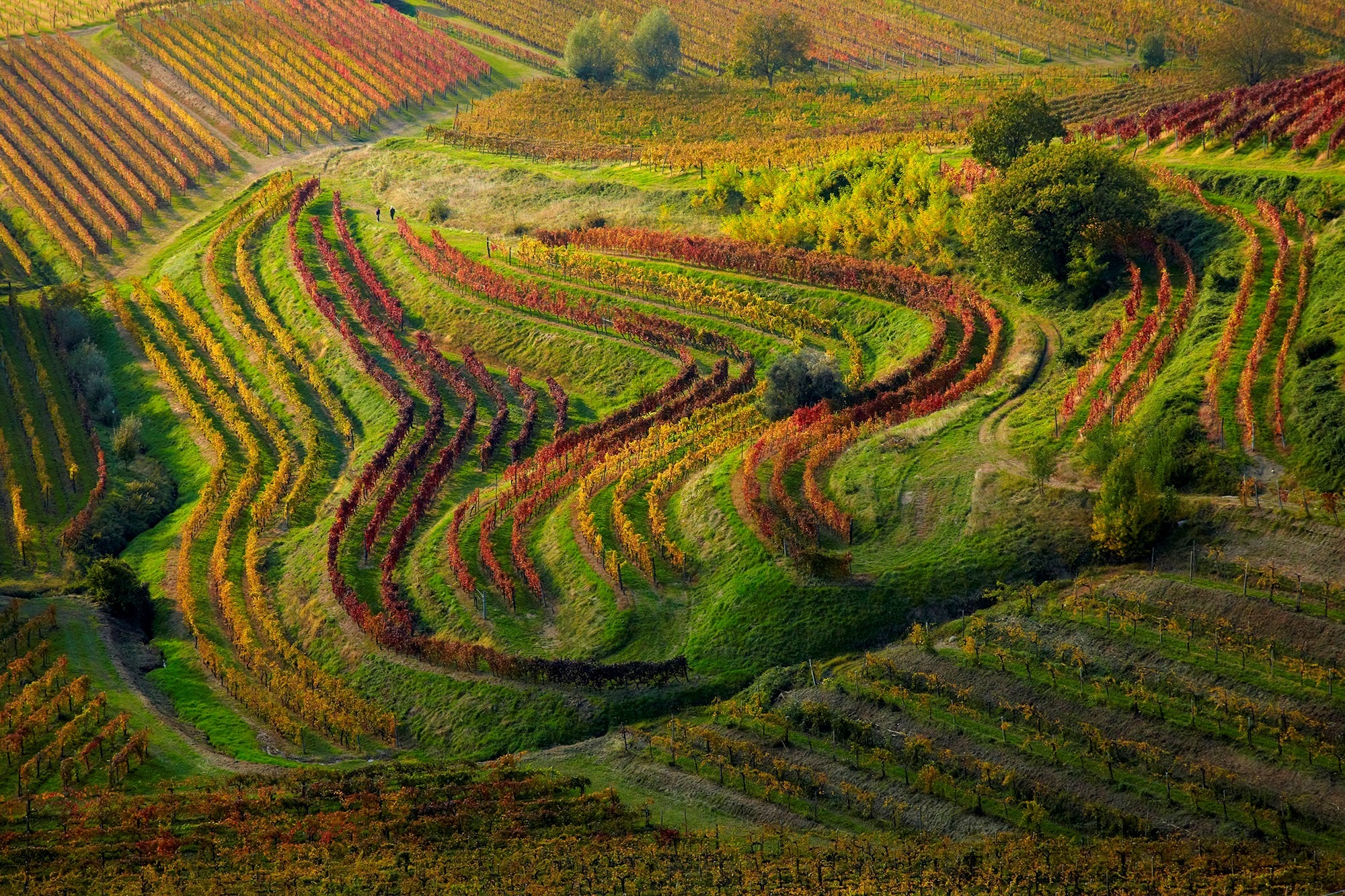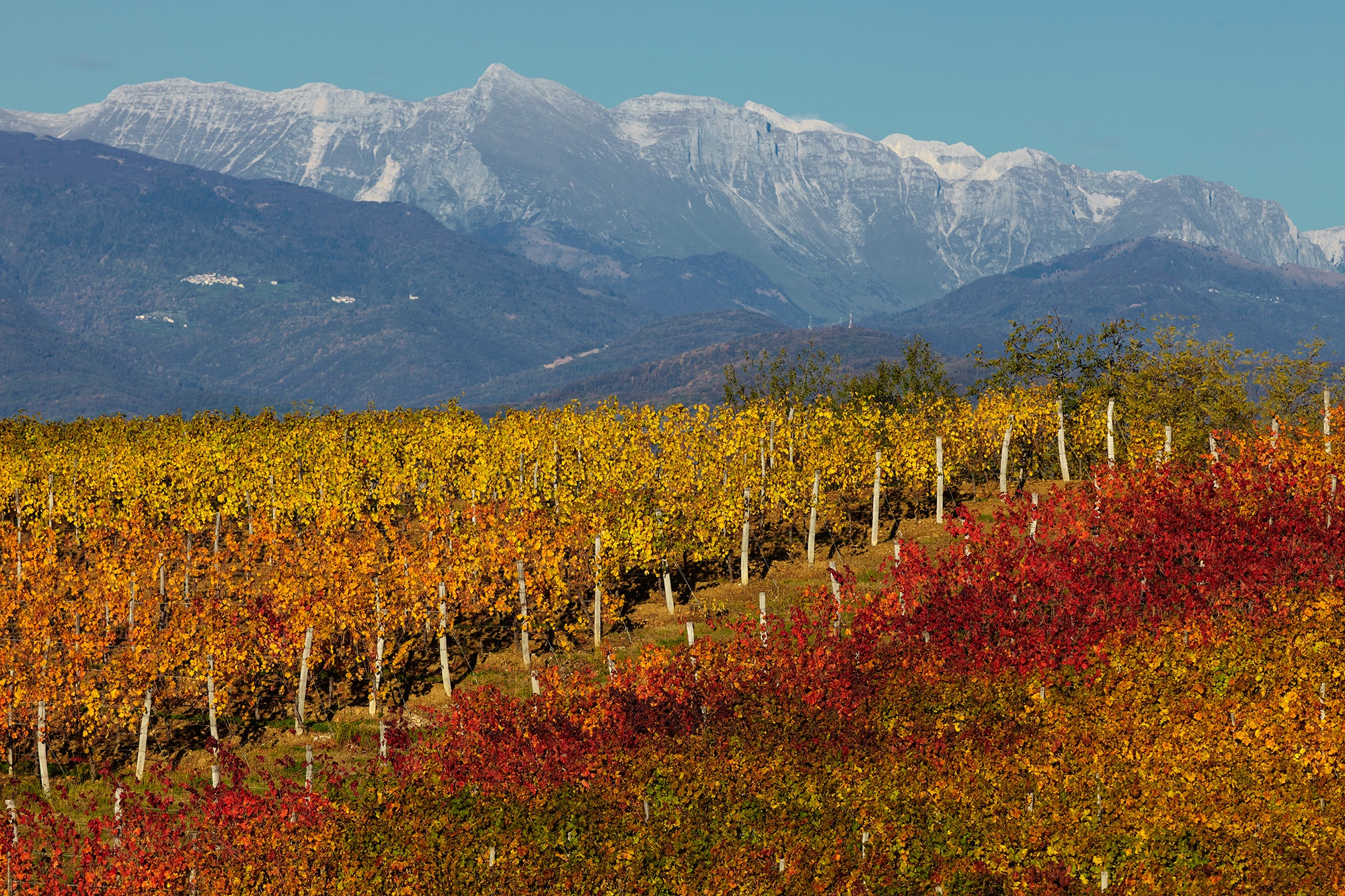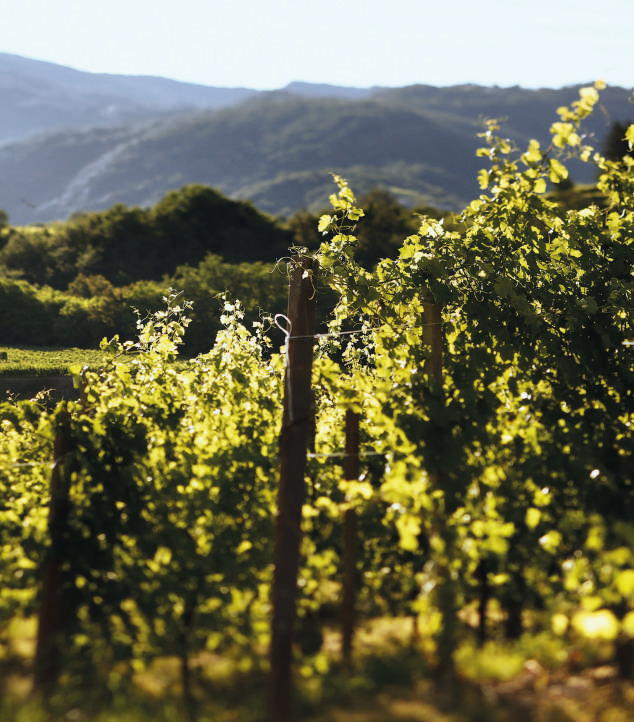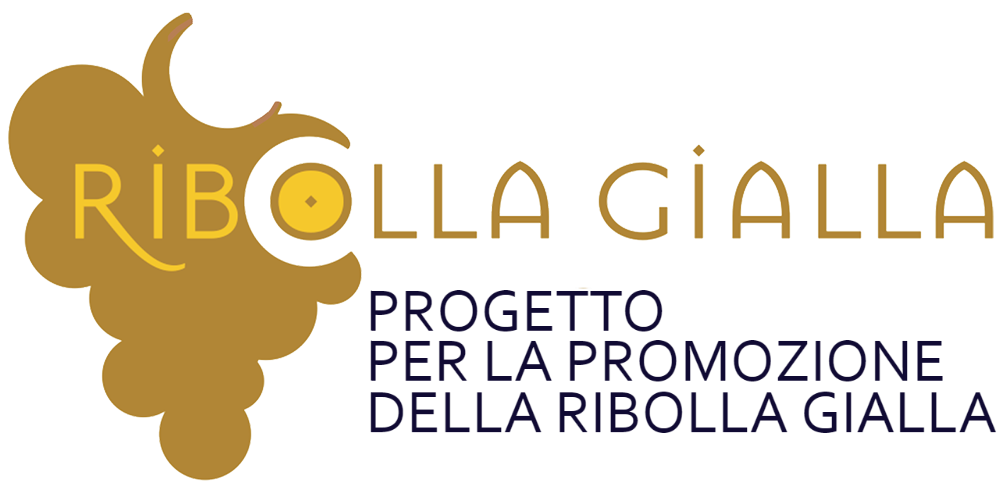RIBOLLA GIALLA – The vineyard Friuli – The DOC and DOCG
The doc and e docg
The following sheets are dedicated to the renown areas with the designation of origin of production of Friuli Venezia Giulia, accompanied by maps created by the Wine Service of the Ersa in the nineties. In some cases the maps no longer reflect the updates of the respective production regulations: The Italian Wines re-proposes them because they have entered the collective memory of the professionals and lovers of Friulian wine, representing appreciated tools for promoting and enhancing the specificity and peculiarity of the different areas regional vines.
Karst
It was the year 1985 when the name Karst was recognized. It took another 8 years before the Consortium of protection took over, the only one in the region that in the statute, in honor of the Slovenian minority which represents the majority of winemakers, also bears the name “Konzorcij za Lascito Kontroliranega porekla Vin Kras” . But this is not the only particularity of the Doc Carso.
There is certainly only the environment, both suggestive and difficult to make viticulture, but also the ampelographic base that includes two varieties, the Terrano and the Vitovska, practically untraceable in the rest of the regional territory. The few winemakers in the area are the spokesmen of a small winery that nevertheless manages to express products of great charm and elegance. “Sea” wines that are perhaps a little detached from the classic types of Friuli Venezia Giulia but which, precisely for this reason, harmoniously complete the range.
The characteristic wines of this territory are: Malvasia, Terrano and Vitovska.
Collio
The Collio is the hilly strip in the province of Gorizia that extends close to the border with Slovenia, between the Isonzo and Judrio rivers in a succession of slopes generally exposed to the south, particularly suitable for specialized and valuable viticulture. The presence of the Julian Prealps behind the Collio helps to create a protective barrier against the cold northern winds; the proximity of the Adriatic has a positive influence on the climate, thus creating an absolutely unique microclimate for ventilation and thermal excursion. Another positive element is the composition of the land, consisting of marls and strata of sandstones coming to the surface due to the outcrop of the Adriatic seabed in the tertiary period. Under the action of atmospheric agents these rock formations are transformed into an ideal substratum for viticulture. The natural inclination of the slopes allows an adequate water supply to a qualitatively optimal production.
The characteristic wines of this area are:
White Collio, Tocai Friulano, Chardonnay, Malvasia, Müller Thurgau, Picolit, Pinot Blanc, Pinot Grigio, Ribolla Gialla, Riesling Italico, Riesling, Sauvignon, Traminer Aromatic, Collio Rosso, Cabernet, Cabernet Franc, Cabernet Sauvignon, Merlot, Pinot Noir
Friuli Annia
It is a small Doc of 200 hectares characterized by sandy – clay soils, rich in mineral salts inserted in a valuable naturalistic context. The climate is characterized by sea breezes and by good daily temperature variations, whose influence is found in the singular fullness and in the richness of the perfumes typical of the wines produced in the whole southern part of the province of Udine.
The Consortium for the protection of the Friuli Annia Doc is the last, in chronological terms, to appear on the Friulian viticulture stage. The deed of incorporation is dated 1996 and follows, after about a year, the decree recognizing the designation of origin. In a longer perspective, the Consortium’s intent is to make Doc Annia gain the right visibility in the wine lists of those offering seafood and typical dishes. An objective certainly within the reach of the producers of a denomination that has brought in Marano Lagunare its ideal capital; locality that in addition to the most important fish market in the region boasts a high level catering.
Friuli Aquileia
The production area of Doc Friuli di Aquileia wines consists of the strip of land facing the Grado Lagoon and continues northwards, towards Aquileia and Cervignano del Friuli, until reaching the historic fortress of Palmanova. The pedoclimatic characteristics of this area have proved to be particularly suitable for vine cultivation since ancient times.
The climate in fact benefits from the proximity of the sea, being always ventilated in the summer, therefore less humid, and milder in the winter with temperatures that only a few times fall below zero.
The soils are mainly clayey with a sandy component in percentage that varies from area to area.
They originated over the millennia, from alluvial phenomena, tearing the clay, sand and rich mineral debris from the hills above. Climate and soil together therefore favor an optimal development of the vine and ensure ideal conditions of balance of the plant, the main factor for obtaining very high quality grapes.
Friuli Colli Orientali
Art, culture, history and, of course, wine: the area of production of the “Friuli Colli Orientali” Doc wines, which in Cividale has its oenological capital and the best known center outside the regional borders, is still to be discovered – or almost – from a tourism and landscape point of view. From the slopes of Mount Bernadia, to the north, to the Judrio which marks the border between the provinces of Udine and Gorizia, you are spoiled for choice: discovering the ruins of medieval castles around Attimis, visiting religious monuments such as the Parish Church of San Gervasio in Nimis or the Abbey of Rosazzo, Cividale with its Roman and Longobard vestiges. The 2300 hectares of vineyards of this territory have been renamed “Park of the vine and wine”, a happy synthesis of a project that wants to guarantee the maximum development of viticulture in the context of an integrated management of resources. The Consorzio Tutela “Friuli Colli Orientali”, an integral part of this project, now boasts more than 200 members of which one hundred are bottlers and many of them offer quality farm hospitality. From their vineyards they produce over 80 thousand hectoliters of Doc wine, of which at least 30% is sold abroad.
Within the territory of this Doc insist the Schioppettino sub-areas of Prepotto, Cialla, Pignolo di Rosazzo, Ribolla Gialla di Rosazzo, Refosco di Faedis. The three Docg Ramandolo, Picolit and Rosazzo also fall entirely into portions of the Friuli Colli Orientali area.
Friuli Isonzo
The valley of the river Isonzo, the high plain of the province of Gorizia, a world of great wines. Valuing the environmental peculiarities, studies have been carried out that have led to the division of the territory in homogeneous areas for types of land and climate: the left of the Isonzo stands out for its little calcareous soils, rich in noble clays mixed with red gravels, while the right is very calcareous thanks to the presence of white gravels. For this reason, there is a project that divides the territory into two defined areas called RIVE ALTE and RIVE DI GIARE that can appear on the label since April 2004. The area is dedicated to the production of both red and white grapes, which give structure and color to red wines, intense and velvety, and elegant and harmonious aromas to white wines.
Friuli Grave
Between the provinces of Udine and Pordenone, along the Tagliamento river, there is a natural landscape of outstanding originality: the “magredi” or “grave”, generated by the large alluvial cones of the rivers Meduna, Cellina and Tagliamento. In the northern part they are characterized by a coarse ground, thinner near the coast as the rivers continue in their course. The Dolomites and the Alps Carniche and Giulie shelter the Grave from the currents and from the cold winds coming from the north, while the beneficial effect of the proximity of the Adriatic Sea helps to mitigate the climate, making it particularly suitable for the cultivation of the vine. Another reason characterizes the Grave and its valuable production: the wide stony expanse during the day reflects the light necessary for the ripening of the grapes, in the evening it returns the heat accumulated in the sunniest hours, with a double beneficial effect for the vine. Especially on late summer nights, this influence is important as it allows the harvest season to be prolonged, obtaining more sugary grapes, with a greater supply of aromas and perfumes. So since the dawn of time. So Sassi Doc.
Friuli Latisana
The area extends in the southern part of the province of Udine and includes sandy-clay soils, sometimes difficult to process but rich in mineral salts; the terroir, the characteristic breezes, the thermal excursions determine the body, structure and aroma of the wine. Perhaps not everyone knows of the existence of archival documents that testify how much Latisana wines were kept in consideration at the banquets of the Serenissima Republic of Venice. The fact that the same wine is still sung in the Friulian villas is still more well known. The existence of a consolidated wine tradition is therefore out of the question. But what most characterizes these lands is the ability to express a tourist vocation that seems written in the genetic heritage of the people of the “riviera friulana” and that, mind you, does not end on the beaches of Lignano. It is a hospitality that speaks of countryside, resurgences, shady fronds that bathe in the silent waters of the river Stella. Hospitality that necessarily passes through the kitchen and, of course, through the wine glasses. The characteristic wines of this territory: Pinot grigio, Pinot bianco, Chardonnay, Sauvignon; Tocai friulano, aromatic Traminer, Malvasia, Riesling renano, Merlot, Cabernet Franc; Cabernet Sauvignon, Refosco dal peduncolo rosso; Pinot noir, Franconia.
Docg Picolit
The Picolit is characterized by very limited production due to a particularity in the development of the berries that undergo a partial floral abortion, leaving the bunch scattered with smaller and sweeter berries. Today it is cultivated in the hills of Friuli Venezia Giulia, in the provinces of Udine and Gorizia. The 2006 harvest is the first in Docg “Colli Orentali del Friuli – Picolit”: thanks to the recognition of the particular value, the Picolit is in fact the second DOCG of the Friuli Venezia Giulia region. Color: straw yellow. Intense antique golden yellow, especially if aged or aged in wood. Bouquet: very complex, fruity, with notes of dried fruit, apricot and honey; floral notes of broom and linden. Taste: sweet, harmonious, pleasantly fat, balanced on the palate. Excellent alcohol content. Persistent aftertaste with fruity sensations in line with the aromatic contribution. Pairings: for its characteristics it is a “meditation” wine to pair with dry pastries or aged cheeses such as the “formadi frant”, an ancient Friulian dairy product.
Docg Ramandolo
Historically it seems established that the Verduzzo Friulano was cultivated in these lands already in pre-Roman times and is therefore considered to all intents and purposes a vine of native origin.
So we arrive in our groups, days of excellence that see the area of Ramandolo become the first “cru” of Friuli, sub-area carved out of the Colli Orientali del Friuli and authorized to give the name to the wine produced there and, later, first Docg of the region with ministerial decree of 9 October 2001.
Ramandolo is produced, as mentioned, using the grapes of the Verduzzo Friulano variety harvested in the vineyards that grow in a very specific area of the territories of Nimis and, in part, of Tarcento, north-east of Udine, a sort of natural amphitheater which creates an ideal environment for the cultivation of this particular variety.
The production method involves the use of overripe grapes, even in percentage; the grapes are left to dry on the plant, as tradition dictates, or they are collected and placed in a well-ventilated place for drying.
To date, the Consortium has 29 Associated Farms of which 26 bottlers.
The characteristic wine of this area is: Ramandolo
Docg Rosazzo
It is the most recent – the decree dated October 14, 2011 – to enter the Olympus of Controlled and Guaranteed Denominations of Origin. The new Docg Rosazzo involves about ten companies that produce about 1,200 hectoliters of wine per year on about 50 hectares of vineyards. Only one white wine with the Docg label is produced, which is an absolute novelty for Friuli Venezia Giulia: it is a blend with Friulano (at least 50%), Sauvignon (20-30%), Pinot bianco o Chardonnay (20-30%), Ribolla gialla (up to 10%). “Rosazzo” wine, when released for consumption, must respond to specific characteristics, including a more or less intense straw yellow color, a characteristic and delicate odor, a dry and harmonious flavor and a minimum alcoholic strength by volume equal to 12%.
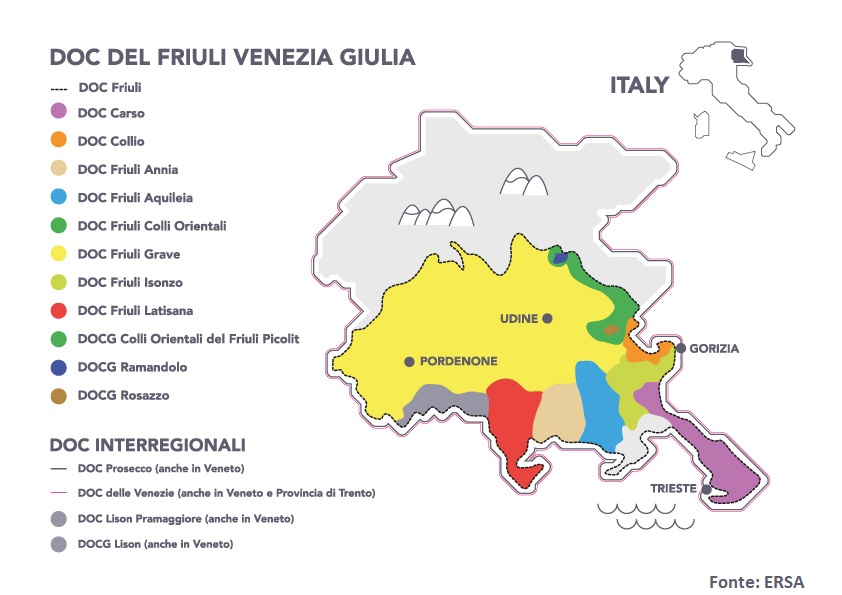
The DOC- FVG Consortium is formed by the following Protection Consortia:
DOC FRIULI ANNIA: www.docfriuliannia.it
DOC FRIULI AQUILEIA: www.viniaquileia.it
FRIULI COLLI ORIENTALI E RAMANDOLO: www.colliorientali.com
DOC FRIULI GRAVE: www.docfriuligrave.com
DOC FRIULI ISONZO: www.vinidocisonzo.it
DOC FRIULI LATISANA: www.docfriulilatisana.com
